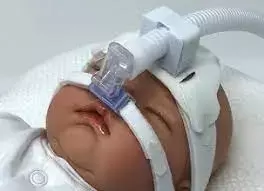- Home
- Medical news & Guidelines
- Anesthesiology
- Cardiology and CTVS
- Critical Care
- Dentistry
- Dermatology
- Diabetes and Endocrinology
- ENT
- Gastroenterology
- Medicine
- Nephrology
- Neurology
- Obstretics-Gynaecology
- Oncology
- Ophthalmology
- Orthopaedics
- Pediatrics-Neonatology
- Psychiatry
- Pulmonology
- Radiology
- Surgery
- Urology
- Laboratory Medicine
- Diet
- Nursing
- Paramedical
- Physiotherapy
- Health news
- Fact Check
- Bone Health Fact Check
- Brain Health Fact Check
- Cancer Related Fact Check
- Child Care Fact Check
- Dental and oral health fact check
- Diabetes and metabolic health fact check
- Diet and Nutrition Fact Check
- Eye and ENT Care Fact Check
- Fitness fact check
- Gut health fact check
- Heart health fact check
- Kidney health fact check
- Medical education fact check
- Men's health fact check
- Respiratory fact check
- Skin and hair care fact check
- Vaccine and Immunization fact check
- Women's health fact check
- AYUSH
- State News
- Andaman and Nicobar Islands
- Andhra Pradesh
- Arunachal Pradesh
- Assam
- Bihar
- Chandigarh
- Chattisgarh
- Dadra and Nagar Haveli
- Daman and Diu
- Delhi
- Goa
- Gujarat
- Haryana
- Himachal Pradesh
- Jammu & Kashmir
- Jharkhand
- Karnataka
- Kerala
- Ladakh
- Lakshadweep
- Madhya Pradesh
- Maharashtra
- Manipur
- Meghalaya
- Mizoram
- Nagaland
- Odisha
- Puducherry
- Punjab
- Rajasthan
- Sikkim
- Tamil Nadu
- Telangana
- Tripura
- Uttar Pradesh
- Uttrakhand
- West Bengal
- Medical Education
- Industry
LDH may help predict hospitalization in neonates with Transient tachypnea of newborn

Transient tachypnea of the newborn (TTNB) is a common neonatal cause of respiratory distress which occurs due to delayed reabsorption of the pulmonary alveolar fluid seen in term neonates. Although TTNB is a self-limiting condition requiring supportive management, there have been reported complications requiring intensive care. Prediction of these complications is difficult , for this purpose researchers conducted a study to correlate LDH levels with complications and duration of hospitalisation in TTNB neonates.
It is a well known fact that lactate and LDH are good predictors of asphyxia. When cells are damaged, LDH is released out of cells into the bloodstream which elevates its level in plasma. In the literature, association between LDH and oxygen requirement, other neonatal comorbities have been reported, but this is the first ever study, to explore association of raised LDH with course of TTNB.
In this cross-sectional reterospective study a total of 120 neonates referred to tertiary care center with TTNB were included after excluding cases with neonatal sepsis,pneumonia, MAS, asphyxia and cardiopulmonary abnormalities.
Mean birth weight of the study group was 2855g with caesarean section being mode of delivery reported in 117 neonates(97.5%). 48 neonates(40%) required prolonged hospitalization(more than 3 days) and complications predominantly pneumothorax as reported in 12(10%) neonates.
Serum LDH levels were elevated in 46.6% of study group .Duration of hospitalization and pneumothorax were compared among high and low LDH groups.Upon analysis by Pearson's Chi-square test researchers found a statistically significant relationship between the high LDH levels and the duration of hospitalization and the complications(pneumothorax).
"LDH may be used as a predictive measure through which prevention can be achieved by referring the TTNB patient to the NICU before the clinical situation is worsened"-authors conclude.
Source:International Journal of Pediatric Research
Dr Kamal Kant Kohli-MBBS, DTCD- a chest specialist with more than 30 years of practice and a flair for writing clinical articles, Dr Kamal Kant Kohli joined Medical Dialogues as a Chief Editor of Medical News. Besides writing articles, as an editor, he proofreads and verifies all the medical content published on Medical Dialogues including those coming from journals, studies,medical conferences,guidelines etc. Email: drkohli@medicaldialogues.in. Contact no. 011-43720751


